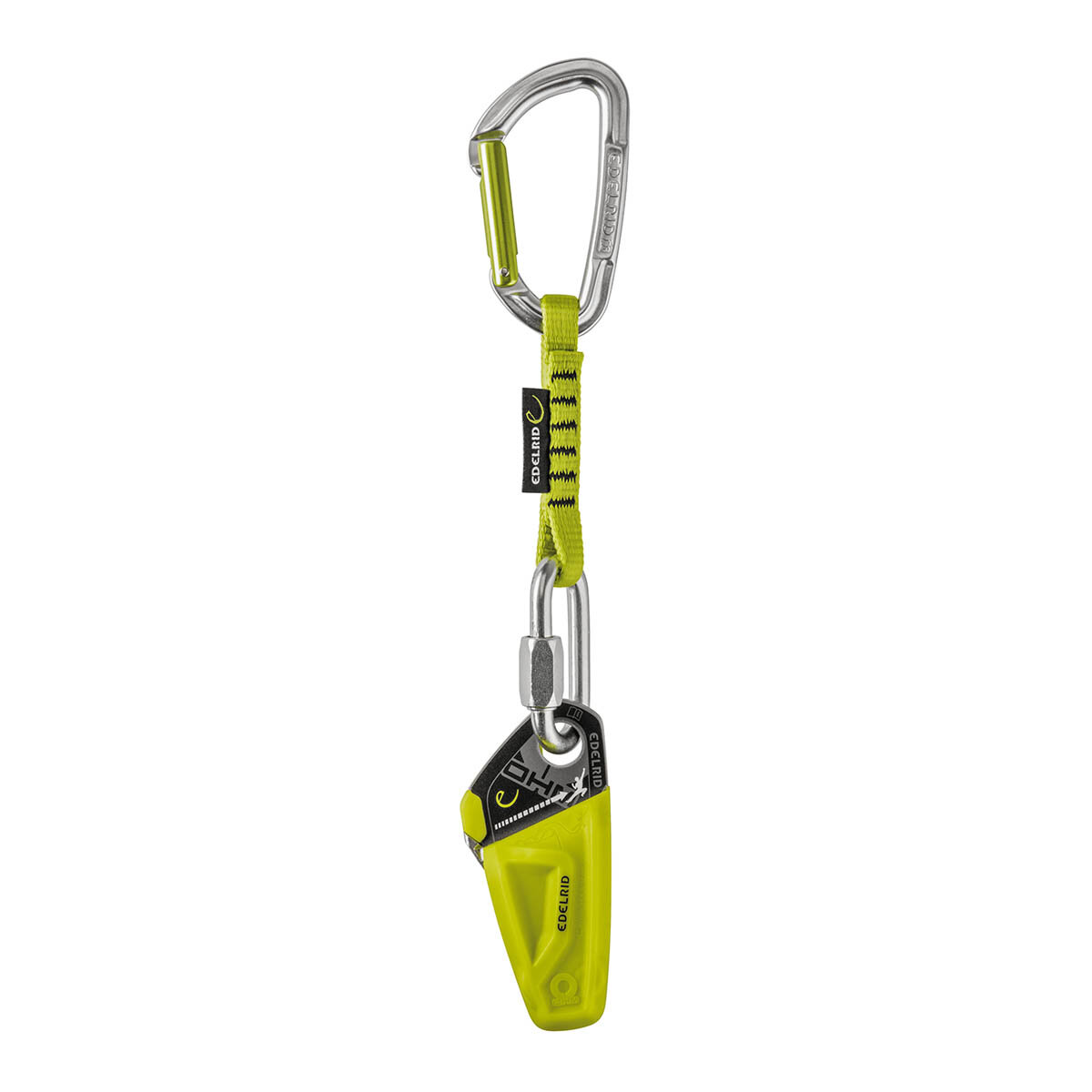"Edelrid Ohm" Gear Review by April Herrera
When we first heard about the Edelrid Ohm in review videos from Outdoor Retailer 2016, Walter (my boyfriend) and I were pretty excited. At the time, I had been climbing for about six months consistently indoors and had dreamed of starting to lead climb, thought I wasn't at that point strong enough nor did I have the skill for it yet.
As time went on, I started to mock lead, take my intro to lead class and take the lead test at the gym. Although it took me a number of tries, I did eventually pass the lead test. It was now officially time to look into whether the Ohm made sense for us.
For those of you unfamiliar with the Ohm, it is an assisted-braking resistor that you install at the first bolt. In the event of a fall, the Ohm increases rope friction so that a lighter belayer can hold a heavier partner without being suddenly pulled off the ground and thrown against the wall.
Walter and I have about an eighty pound (80 lbs) difference in weight. It was jarring to catch him on lead because our huge weight difference would usually mean he would drag me up the wall a ways. We decided to purchase the Edelrid Ohm and we've beens huge fans of it ever since.
The Ohm has given me a lot more confidence belaying Walter when he lead climbs. I no longer worry about getting pulled up the wall to the first bolt if he takes a whipper. It also give Walter an extra sense of ease when I belay him, so he's more willing to push his limits on lead. The device is really simple to set up and I recommend the leader set it up and clip it to their harness before they leave the ground. With that said, you can easily set the device up wrong if you're not paying attention, so please do review the instruction manual that comes with Ohm.
We've found the Ohm does have some drawbacks though. One of the main issues we've found with the Ohm is taking off the device from the first bolt as you're lowering the leader. The leader will have to get back on the route near the first bolt and the belayer will have to put slack in the system so the climber can disengage the Ohm, release the Ohm from the rope and remove it from the bolt. Once the Ohm is out of the system, the belayer will immediately feel the weight difference. To work around this configuration, I will sometimes lower the Walter to the ground, climb up to the first bolt, remove the Ohm and down-climb. You could also use a stick clip to remove the Ohm from the first bolt as well, but we haven't tried this yet.
Another issue we've come across with the Ohm is that if Walter pulls the rope up too quickly to clip, it can sometimes engage the Ohm. We haven't had this happen too often, but because it did, I felt that it would be important to mention in this review.
Overall, the Ohm is a welcome addition to our gear collection.

